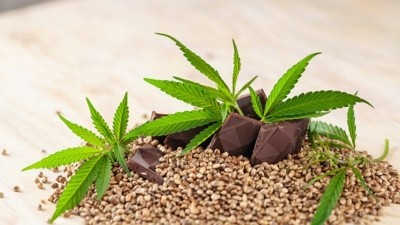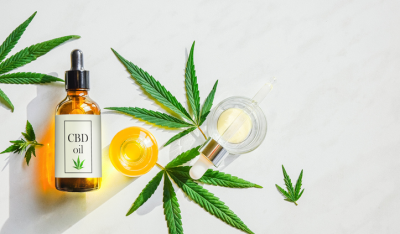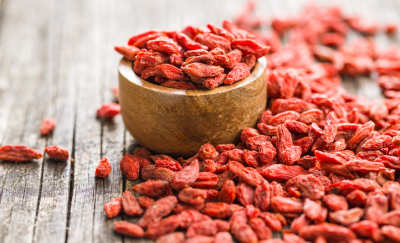CBD-alternative? Review shows PEA targets similar pathways, ‘but safer and legal’

The review, published in the Journal of Dietary Supplements, was authored by Dr Paul Clayton from the Institute of Food, Brain and Behaviour at Oxford, along with three employees at Gencor Pacific and a researcher from the University of Hong Kong.
It showed that palmitoylethanolamide (PEA) overlapped CBD in their biochemical roles in humans.
Palmitoylethanolamide (PEA) is an endocannabinoid-like lipid mediator belonging to the family of N-acylethanolamine (NAE) phospholipids. It is present in all cells, tissues, and fluids of the human body.
When used in nutraceuticals, it is usually given at a dose of 1,200mg/day.
One known mechanism of CBD is that it exerts actions on cannabinoid receptors such as CB1, CB2 and the endocannabinoid system (ECS).
Similar to CBD, the researchers said in the review that PEA also interacted with the body’s ECS.
“Recent evidence has shown that PEA, through binding to PPAR-alpha, resulted in an increased expression of CB2 receptors and TRPV1 activation, providing another mode of action in which PEA interacts with the endocannabinoid and endovanilloid systems.
“There is also evidence that PEA activates the orphan receptors GPR55 and GPR119, which have been putatively identified as novel cannabinoid receptors.”
Applications in healthy individuals
However, when it comes to the types of populations studied, the researchers pointed out that CBD studies were conducted on diseased population. Unlike PEA, there is a lack of studies conducted in healthy individuals.
Most of the clinical studies using CBD were conducted on patients suffering from epilepsy and other neurological disorders.
“The effects of chronic CBD-based therapies with long-term follow up periods for the above conditions have yet to be researched. Furthermore, the current science of CBD is limited to disease states.
“No study to date has elucidated CBD as an ECS modulator in a healthy state…There remain, therefore, serious questions on the safety and efficacy of CBD as an ECS modulator in lifestyle management.”
To date, the US FDA has approved Epidiolex, a drug with purified CBD for use in children with Dravet Syndrome and Lennox-Gastaut Syndrome.
On the other hand, some mild to moderate adverse effects have been reported in humans with chronic administration of CBD.
Fatigue, diarrhoea, kidney abnormalities, changes in appetite and weight were some commonly reported side-effects that resulted from consuming 10 to 50mg/kg/day of CBD.
“Adverse effects of CBD have been documented in animals and humans alike. There is also a paucity of information on its mechanisms of action through the ECS and its long-term safety profile, specifically changes that may occur in the CNS with long-term exposure,” the researchers said.
As for PEA, the researchers pointed out that there have been clinical studies showing its efficacy in eczema, exercise recovery, influenza, common cold, on top of its uses for alleviating pain from endometriosis, migraine, joint and neuropathic disorders.
They added that the ingredient has been backed by 50 years of scientific literature studies showing good safety and tolerability.
“The lack of adverse effects is likely due to PEA being an endogenous autocoidal compound, and a natural component of the human diet,” they explained.
Regulatory oversight
The other crucial difference between the two is the degree of regulatory oversight governing the use of these two ingredients.
“CBD extracted from Cannabis Sativa is not a controlled substance and there are at least 12 potential controlled contaminants in CBD products, including tetrahydrocannabinol (THC).
“This causes confusion among the general population and various companies relating to the regulatory status of products containing hemp, CBD, and other cannabinoids.
“Various products containing CBD are currently sold online, despite the USFDA prohibiting sales of CBD as a dietary supplement,” the researchers said.
Similarly, in Europe, the European Food Standards Agency (EFSA) has yet to approve any CBD suppliers.
"The novel food status of CBD extracts was confirmed in January 2019, and the European Commission updated their Novel Foods Catalogue to reflect this change. The catalogue itself has not got legal status.
"The European Commission uses this tool to show the decisions made on novel food status and it is these decisions that have legal status. This makes it clear that CBD extract and isolate products are legally novel foods.
"There are currently no authorised CBD extracts or isolates on the market," said UK's Food Standards Agency.
On the other hand, the researchers pointed out that PEA has been approved to be marketed and sold globally.
For instance, Gencor Pacific's PEA ingredient trademarked Levagen+ has been approved by Australia's Therapeutic Goods Administration (TGA), Food Safety and Standards Authority of India (FSSAI), Canada's Natural Health Products Directorate (NHPD), and the Brazilian Health Regulatory Agency (ANVISA).
CBD alternative
Speaking to NutraIngredients-Asia, R.V. Venkatesh, CEO of Gencor Pacific, said that in view of the regulatory complexity surrounding CBD, some brands have turned to marketing PEA as a CBD alternative.
“Many companies which have been marketing CBD legally are also now starting to look at the fact that they are running into brick walls everywhere and they might as well start to look at the CBD-alternatives,” he said.
Last year, Gencor’s PEA ingredient, trademarked Levagen+, was marketed as a “non-hemp alternative to CBD” by Holland and Barrett through the product VitaBoost.
Elsewhere in Asia-Pacific, Metagenics Australia has also used Levagen+ in its Bio Absorb PEA 42 capsules.
While the product does not claim to be a CBD-alternative, it is said to exert endocannabinoid-like actions for analgesic and anti-inflammatory support.
“What we have done to help our clients [in claiming that PEA is a CBD alternative] is to publish the data comparing CBD and PEA in scientific literature, based on science.
“Our objective is not to object the CBD compound, but we are observing it and measuring it on the same scale [as the other compounds],” he said, adding that this was the first time that the company had conducted a review comparing CBD and PEA.
Source: Journal of Dietary Supplements
Palmitoylethanolamide: A Potential Alternative to Cannabidiol
DOI: 10.1080/19390211.2021.2005733
Author: Paul Clayton et al















